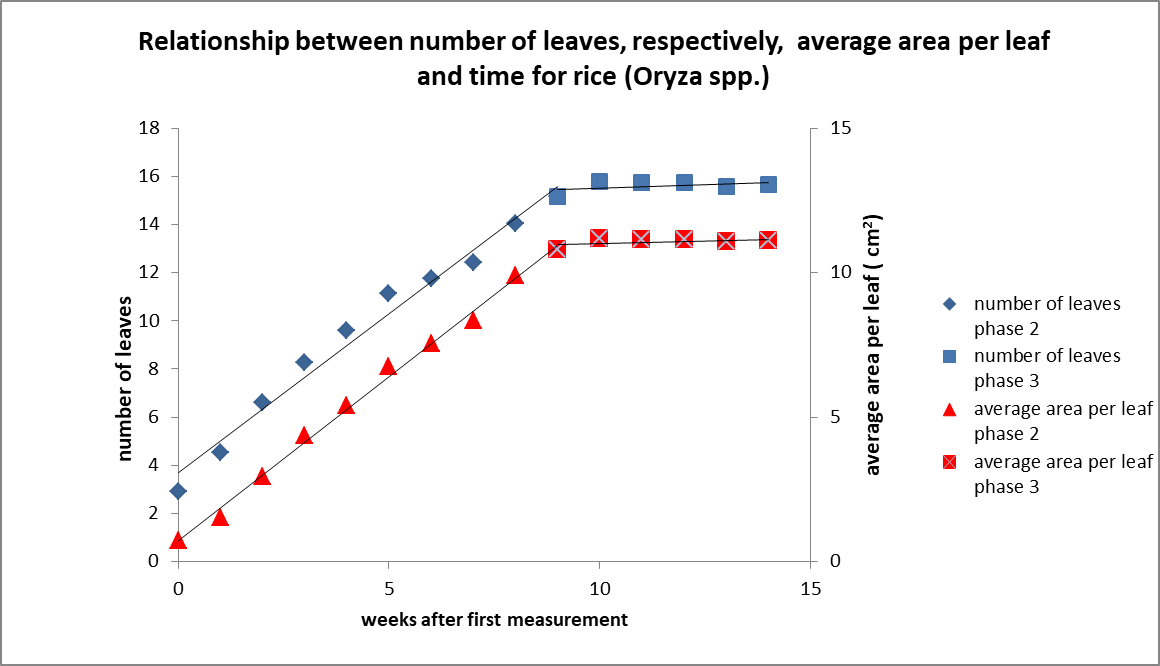Introduction
Earlier experiments (link1, link2) indicate that plants do not grow exponentially but according a second-order polynomial. New experimental data are necessary to confirm or to reject these conclusions.
Different sources make the data more credible. We were lucky to find a dataset published by a renowned institute. The site is revealed on request.
Methods
The dataset (for rice, Oryza spp.) included leaf area measurements and counting of the number of leaves. They started not before already 3 leaves appeared. Not all the leaves were measured. From sample 4 onwards only the last three leaves were measured.
But analysis showed that there was almost no increase in area of one leaf after the first measurement. Apparently the leaf of a rice plant has its full size on the moment it rapidly unfolds. So, we assumed that we could use the area of the leaves from the earlier samples to determinate the total leaf area per plant.
Of course, in this way there is no assessment of the aging and degeneration of older leaves, caused by the competition with other plants, but at least it gives an indication of the maximal area of the leaves to be achieved by an individual free standing plant.
Notice, that we showed in an earlier paper (link3), that when the productive mass, measured by leaf area, is growing according a second order polynomial, the total plant will also show this characteristic in growth.
Results
The results, see the figure below, show from week 0 until week 9 after the first measurement clear linearity for two components of the leaves: number of leaves and average area per leaf . Therefore, average leaf surface per plant must, as product of two linear components, show a second order polynomial in the relation with time.

Notice: We called the first period phase 2, as the measurements started only after already almost 3 leaves appeared. We suspect, as with sunflower and oil palm, a first phase where the growth parameters are determined by the mobilization of the seed energy and not by the photosynthesis.
The growth stopped suddenly in week 9. The next phase, the generative one, producing a panicle and at the end filling the seed, when all the energy should go to the new generation, is, logically, the cause in this stopping of the expansion of the leaves.
We conclude that plant growth according a second order polynomial, consisting for leaf area of two linear components, is at least not rejected in this experiment.